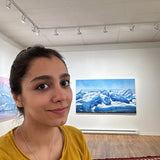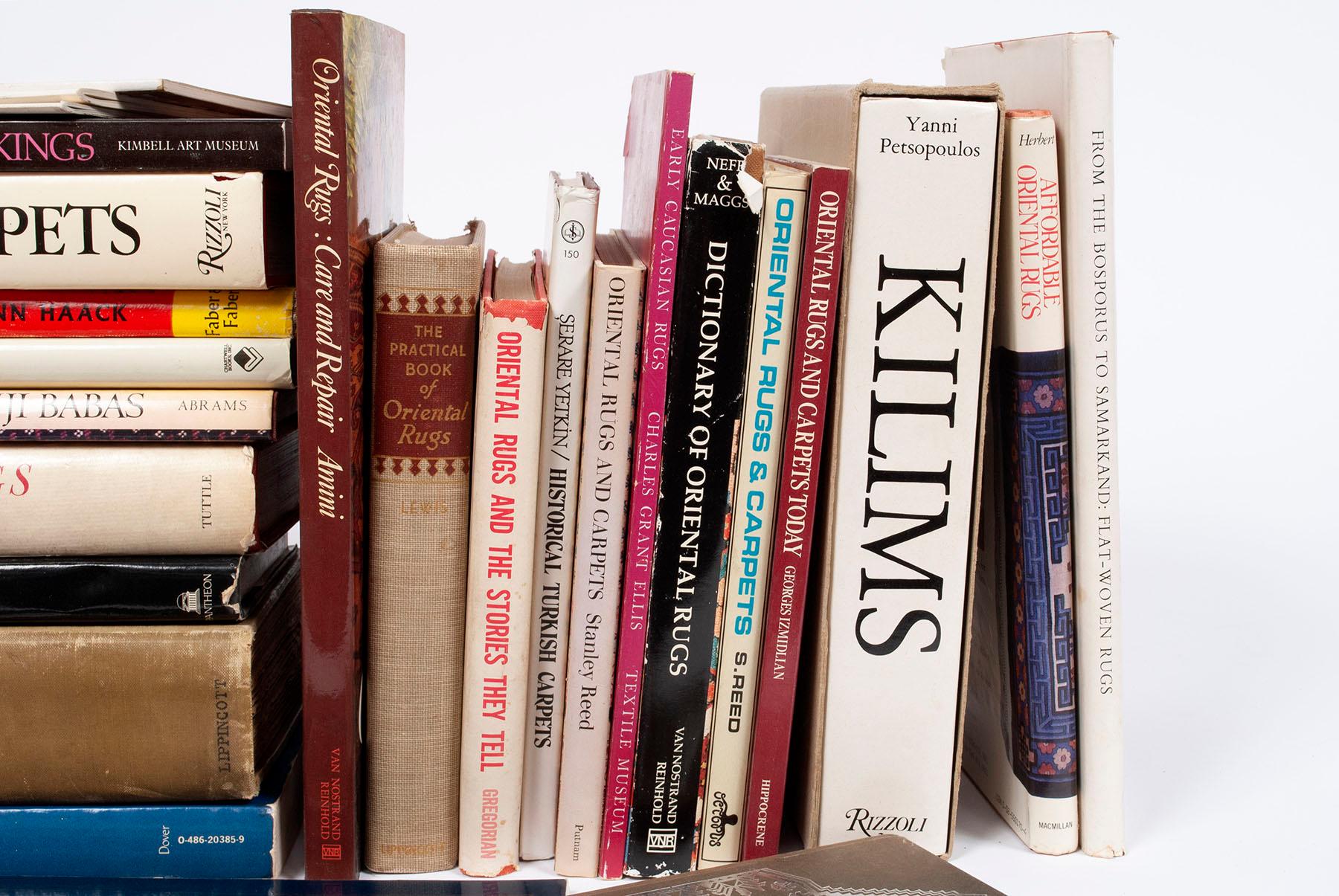Khorasan Baluch rugs are a vibrant testament to the nomadic artistry of eastern Persia.
Woven by Baluch (Baloch) tribes and their neighbors, these rugs are loved for their resonant patterns, symbolic motifs, and unmistakably deep color schemes.
To appreciate them, you have to follow the weavers’ paths—out of Baluchistan, into Khorasan’s market towns, and along the caravan routes that carried small tribal rugs into global collections.
This article traces that journey and highlights the features that make Baluch rugs so distinctive.
 Furg Citadel, South Khorasan
Furg Citadel, South Khorasan
Origins and History of Baluch Carpets
Despite the name, a “Baluch rug” is not confined to today’s Baluchistan. For generations, the most prolific Persian Baluch weaving has come from Khorasan in northeastern Iran (and to a lesser extent Sistan).
Towns such as Torbat-e Heydarieh, Torbat-e Jam, Kashmar, Nishapur, and Sarakhs became centers where Baluch families—and often non-Baluch neighbors influenced by them—wove characteristically dark, geometric pieces.
How did Baluch weavers become part of Khorasan’s landscape? In the 18th century, particularly under Nader Shah Afshar (r. 1736–1747), Baluch clans were encouraged or compelled to move north and help secure Iran’s frontiers against Uzbek and Turkmen raiders.
Over time, many settled as semi-nomads, farming, herding, and weaving. Their patterns mingled with local Persian, Kurdish, and Turkmen ideas, creating a genre more than a single ethnic label: some “Baluch rugs” were woven by Baluch women; others by neighbors who adopted the idiom.
By the 19th and early 20th centuries, Baluch rugs flowed through Mashhad and Herat into Western markets. They were valued not for scale—they are typically small—but for their moody palette, intimate scale, and mesmerizing repetition.
From the late 20th century onward, production declined as young people pursued other livelihoods or migrated. Today, authentic hand-knotted Baluch weavings emerge from a handful of Khorasan villages, and older pieces (mid-century and earlier) are notably collectible.

A woman in Iran wearing traditional Baluchi attire
Characteristics of Baluch Carpets
Baluch rugs are the opposite of grand palace carpets. They are personal—made for tent floors, prayer, bedding, and dowry—so their character is intimate and human-scaled.
Size and Format
Because the traditional loom is a horizontal ground loom, portable and pegged into the earth, widths are limited. Classic formats include small mats (~2.5×3 ft / 0.8×0.9 m), dozar rugs (~3.5×6.5 ft / 1.1×2.0 m), and narrow pieces around 4×7 ft (1.2×2.1 m). Lengths can run to 6–7 ft, but widths rarely exceed ~1.2 m. Runners and flatweaves (kilims, tent bands) exist for domestic use, yet the archetypal Baluch rug remains the compact dozar—equally at home as a prayer rug or layered accent.

Loom, Foundation, and Handle
Traditionally, warps and wefts were all wool—often natural dark or brown shades from sheep or goat hair—giving older pieces that recognizable supple, floppy handle. A hallmark in many Khorasan Baluch weavings is single wefting (one shot of weft between rows of knots), which contributes to the pliant, slightly ribbed back. From the mid-20th century, machine-spun cotton increasingly replaced wool for warp (and sometimes weft), making later rugs a bit crisper and lighter in color on the back.
Knotting, Pile, and Density
The knot is asymmetrical (Persian/Senna), open left or right depending on group. Densities vary but are generally tribal, not city-fine: think roughly 30–90 kpsi in everyday pieces, with outliers finer or coarser. Another way dealers express it is ~25–40 knots per 7 cm horizontally, which translates to about 9–14 knots per inch across. Pile is low to medium in height, using lustrous local wool with good lanolin, which helps shed dirt and gives that soft, slightly oily hand.
Ends, Edges, and Folk Embellishment
One of the joys of Baluch rugs is the finishing:
-
Kilim ends: Weavers leave a flatwoven band at each end—often striped or chevroned—sometimes several inches long, then finish the warps with braids or knots.
-
Selvages: Sides are typically wrapped with thick, round goat-hair cords (dark brown/black), sometimes up to ~2 cm, lending strength and a signature look.
-
Charms: It’s not unusual to see tassels, beads, or shells tied to corners or side cords—personal, protective, and decorative touches that speak to the rug’s life in a tent, not a showroom.

Kilim end detail on a Baluch rug (flatwoven finish before the fringe).
Designs of Baluch Carpets
Baluch design is tribal and geometric, built on repetition, rhythm, and symbol. Instead of grand curvilinear medallions, you see networks—fields filled with small, angular motifs that pulse across the surface.
All-Over and Prayer Formats
Many Baluch rugs use all-over repeats: rows of small guls (octagons), diamonds, or angular floral rosettes, often set diagonally to create motion. Others adopt the cherished prayer (mihrab) layout: a pointed arch at one end frames a stylized Tree of Life rising from a vase. Along its central trunk, horizontal branch-lets carry serrated “willow leaves”—a signature Baluch effect. The spandrels (upper corners) may hold symbolic hand/comb motifs (protection and order), small plants, stars, or, occasionally, brief script forms when the rug was intended for devotion.

Named Patterns and Cross-Pollination
Because Khorasan has always been a crossroads, Baluch design shares and borrows. You’ll encounter:
-
Seh Kheshti (Triple-Panel): a field divided into three compartments—trees, mihrab, animals, or pattern variations—echoing garden and panel traditions in miniature.
-
Gav-o-Borj (Cow and Tower): a colloquial name used by some dealers/regions for narrative or emblematic layouts where zoomorphic and structural shapes are juxtaposed.
-
Sang Chuli: a locally named geometric scheme (the term varies; dealers apply it to certain gul/diamond arrays).
-
Dokhtar-e Ghazi (Judge’s Daughter): an eight-point star within a diamond constellation known across several tribal groups; in Baluch hands it becomes more angular and compact.
What unites these is not any one emblem but the underlying lattice and rhythmic repetition—the feeling of a hand-drawn grid where forms interlock like music.

Triple-panel Balouch rug, from the Rug the Rock collection
Borders
Baluch borders are usually numerous and graphic: a wide main border flanked by several narrow guard borders. Expect hooked meanders, zigzags, reciprocal trefoils, wave (“running-dog”) lines, barber-pole stripes, and tiny star chains. The accumulation of many small borders enhances the sense of intricacy without breaking the rug’s scale.

Border detail of a Baluch rug, from the Rug the Rock collection
Color Characteristics and Dyes
If design is the rhythm, color is the mood. Classic Baluch palettes are deep and earthy: madder reds, indigo blues, browns and camel, all outlined in very dark brown/black to sharpen the geometry. Ivory is rationed—just enough to sparkle in stars, teeth, or fine lines.
Traditionally, dyers used natural dyes:
-
Indigo for blues from midnight to slate.
-
Madder root for reds from brick to wine; iron mordants deepen to crimson/brownish tones.
-
Walnut husk and pomegranate rind for browns and tans.
-
Plant yellows overdyed with indigo to achieve soft greens.
-
Henna and other local sources for orange-to-rust accents.
Undyed camel hair sometimes appears as warm tan fields or panels, especially in prayer niches.
From the mid-20th century, synthetic aniline dyes—particularly bright scarlets—entered the supply chain, giving some later Baluch rugs a “false brightness” (louder reds, less depth, occasional bleeding when new). Higher-end village projects later revived vegetal dyes for connoisseur markets, but everyday production often stayed chemical. Either way, the Baluch look remains: a subdued glow, dark outlines, tiny bright sparks.

Conclusion
Persian Khorasan Baluch rugs are small in size but immense in character. Made for life on the move, they embody utility elevated to art: intimate pieces with somber charm, tribal geometry, and a living vocabulary of symbols—trees, hands, stars, leaves—that meant protection, identity, and prayer.
Because authentic weaving has diminished, earlier Baluch rugs have special allure. Hold one and you can almost see the kilim ends pinned at the loom’s stake, feel the goat-hair selvage under your fingers, and watch the madder red glow against indigo in low light. In interiors, they excel as layering rugs, library companions, bedside warmth—quiet statements that reward close looking.

If you’re drawn to textiles with story and soul, a Baluch rug offers exactly that: a one-of-a-kind piece whose every knot continues an old conversation between maker and material.




















Leave a comment